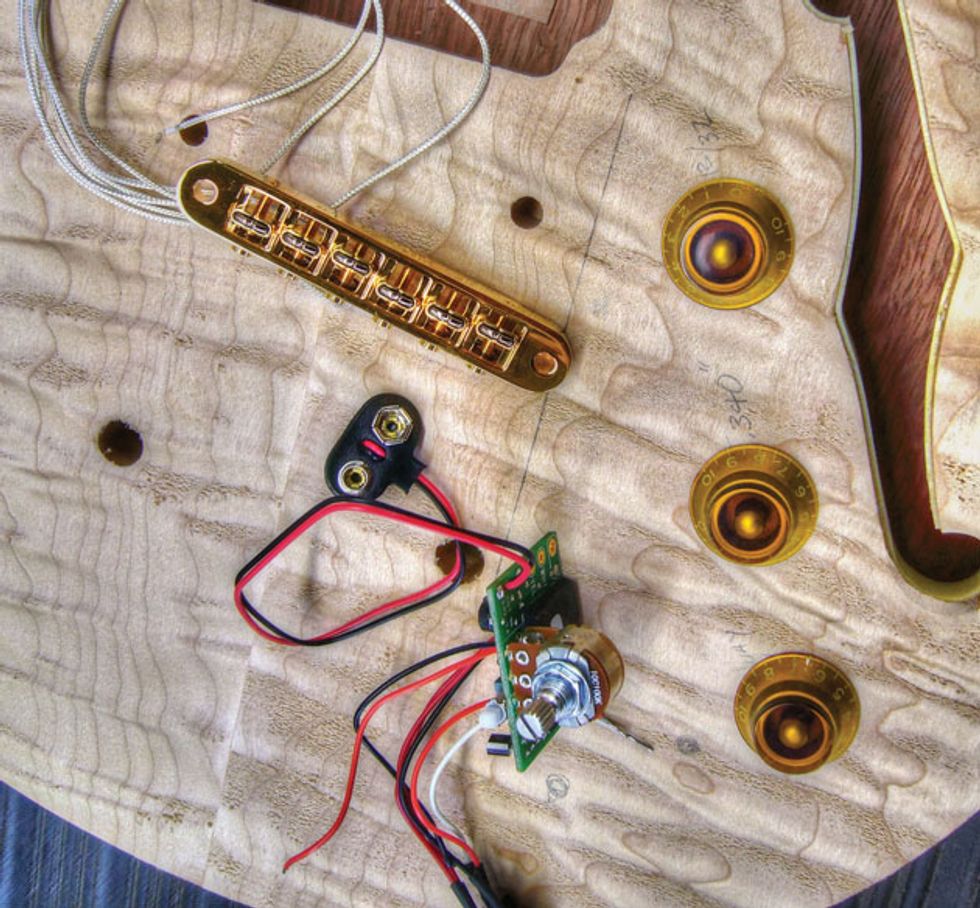To be fair, many builders and distributors are not aware of the origins of their component parts and the implications
of falsely representing them.
In my last column, we took a look at what it is for a guitar to be considered handmade. And as often happens, the deeper I dug into the subject, the murkier it became. Some musicians want the “experience” of dealing with an artisan, while others just want a decent guitar at an affordable price. Quite a few people opined that how an instrument is made is not as important to them as where it is made, often referencing a “Made in USA” preference. This got me thinking about what, if anything, that means.
Although the woods used in American guitar making are often sourced from around the world, guitar components were traditionally fabricated in places like Milwaukee, Chicago, and Kalamazoo. Pickups, bridges, fretwire, and tuning machines were all made completely in the U.S. Names like Grover, Sprague, CTS, DuPont, and Switchcraft were hallowed purveyors of American manufacturing excellence, and their products were used in professional quality instruments because of their quality, reliability, and availability. The raw materials for these parts—such as steel, brass, acrylics, and phenolic—came from Pennsylvania, Indiana, Texas, and dozens of other states. Animal parts such as cow bone and hide-based glues were plentiful right here in America. Paints were formulated from materials harvested in our nation’s backyard.
Over the years, however, I’ve witnessed these same American suppliers steadily transition to offshore manufacturing. Bone nuts come from China, potentiometers and tuners are now made in Korea and Taiwan, while bridges and tailpieces are cast in Japan. I’m not arguing that all of these countries aren’t capable of making great products, but when you see “Made in USA,” what do you expect?
A lot of the legal wrangling that goes on over this subject is centered on—no big surprise—deceptive advertising. If one assumes that a made-in-America claim is beneficial to sales, it’s easy to understand how builders might want to give the impression that their guitars are red, white, and blue—through and through. A few companies might just be proud to be standing on U.S. soil, but if you follow the money, you get swept down a black sinkhole of innuendo and implication.
to the politicians.
The Federal Trade Commission is quite familiar with the unfair and deceptive use of “Made in USA” ploys and has issued guidelines to help define the boundaries of advertising language. This document is titled Complying with the Made in USA Standard, and it’s fascinating reading. There is also a list of companies who have run up against the FTC in this arena (including some in our industry).
To be fair, many builders and distributors are not aware of the origins of their component parts and the implications of falsely representing them. The confusing definition has to do with the percentages of foreign materials and how much of the final product’s cost of manufacture is represented by those materials. It’s necessary to look as far back as the origin of the raw materials. For instance, the FTC states that if the gold in a gold ring is imported, “an unqualified Made in USA claim for the ring is deceptive.” Whoa! Does this relate to the petroleum in my pickguard?
Another of the FTC’s examples states: “A company manufactures food processors in its U.S. plant, making most of the parts, including the housing and blade, from U.S. materials. The motor, which constitutes 50 percent of the food processor’s total manufacturing costs, is bought from a U.S. supplier. The food processor manufacturer knows that the motor is assembled in a U.S. factory. Even though most of the parts of the food processor are of U.S. origin, the final assembly is in the U.S., and the motor is assembled in the U.S., the food processor is not considered ‘all or virtually all’ American-made if the motor itself is made of imported parts that constitute a significant percentage of the appliance’s total manufacturing cost. Before claiming the product is Made in USA, this manufacturer should look to its motor supplier for more specific information about the motor’s origin.”
With this in mind, a guitar maker who sources pickups, bridges, knobs, potentiometers, switches, paint, tuners, and inlays from outside vendors should be wary of proclaiming that the guitar is domestically made in any of their advertising and promotion unless they have audited their sources and calculated the percentages diligently.
I’m afraid that the idea of “American made” is often an illusion. Just like your pickup truck, guitars are far from being strictly domestic today. Of course, another path is for builders to focus on the end result in terms of sound and playability, and leave the flag waving to the politicians. After all, there are wonderful instruments being made in every corner of the globe.
















